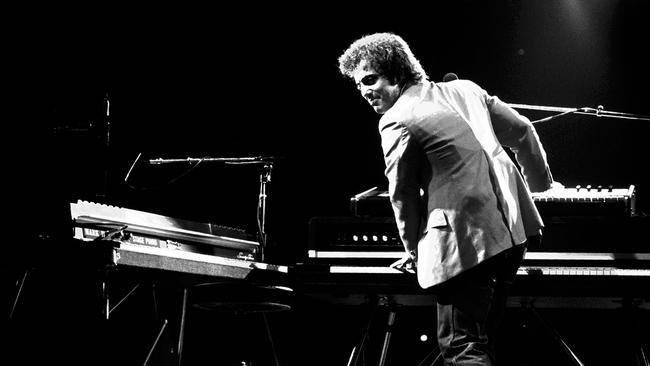Rocking the numbers: the economics of being a rockstar
Pop stardom is part economics, part luck, and other industries can learn from everyone from Billy Joel to the Eagles.

Most musicians earn most of their income from live performances, not from sales of recorded music. Even Paul McCartney, who has written and recorded more number one hits than anyone, earns most of his income playing live.
File sharing and music piracy have widened the gap between the amount of income musicians earn from recorded music and live performances. But even in the pre-Napster days, live performances were a critical source of musicians’ incomes.
The advent of paid streaming — the latest in a long line of disruptive technologies — is beginning to cause artists’ revenue from recorded music to rebound. Nevertheless, the fundamental divide between how consumers consume music and how artists earn a living will almost surely persist. Steely Dan’s Donald Fagen, at age 69, gave a simple explanation for why he went back on tour in 2017: “For me, touring is the only way to make a living.” Established artists such as James Taylor, the Eagles and Billy Joel, who used to tour to promote their latest record albums, now tour without having new music to hawk.
There would be no music without the songwriters, composers and musicians who create and perform it — at least until algorithms and artificial intelligence advance to the point that computers can compose popular music and write lyrics. You may laugh, but AI is already being used in a growing number of applications to compose melodies for commercial purposes. In the future, musicians may be replaced by computer programmers.
In the meantime, it is important to ask: “What draws musicians to the risky business of music? How, and how much, are musicians compensated?”
Most working musicians labour in relative obscurity, barely earning subsistence pay. Only a select few become superstars. Why do some performers ascend to superstardom while other, equally talented musicians remain anonymous and impoverished? Economists start by asking a more basic question: why are some industries prone to superstars in the first place? There are no superstar insurance salesmen or nurses. What makes music susceptible to the superstar phenomenon?
With the music industry as a guide, economists have developed a time-tested model of superstars that has repercussions for the wider economy. Essential features of a market are necessary for a sector to be dominated by a small number of stars.
First, there must be scale economies, meaning someone can apply his or her talents to a large audience with little additional cost per audience member. Second, the players need to be imperfect substitutes, meaning their work is differentiated and unique. Both elements are present in music.
Every successful singer, band and orchestra has a unique sound. And recorded music can reach billions of listeners at little additional cost once a recording is made. By contrast, in medicine, for example, some surgeons are much better than others but they are limited by the number of surgeries they can perform in a day.
This ability to create superstars in music is amplified by another feature that increasingly applies to other industries: the popularity of a song or artist grows geometrically rather than linearly. This is often called a power law. The popularity of the top performer is a multiple of the second-most-popular performer, which is a multiple of the third-most-popular performer, and so on.
Networks help to create power laws. Popularity ricochets through networks of friends and acquaintances, creating power law relationships where a small number of performers garner almost all the attention. In the music industry, this can be seen in the extremely skewed distributions of concert income, music downloads, Shazam requests and merchandise sales.
In his bestselling book The Long Tail, Chris Anderson, then a Wired editor, predicted the internet would lead to greater opportunity for those in what he called the long tail of sales, because smaller producers would be able to find niche markets. This has yet to materialise in the music business. Instead, the middle has dropped out of music as more consumers gravitate to a smaller number of superstars.
Over the past 30 years, the share of concert revenue taken home by the top 1 per cent of performers has more than doubled, from 26 per cent in 1982 to 60 per cent today. The top 5 per cent take home 85 per cent of all concert revenues. The same pattern holds for recorded music.
This is an extreme version of what has happened to US income distribution as a whole. The top 1 per cent of families doubled their share of income from 1979 to 2017. In 1979, the top 1 per cent took home 10 per cent of national income; in 2017 they took home 22 per cent. By this measure, incomes in the US economy today are almost as skewed as they were in the rock and roll industry when Bruce Springsteen cut Born in the USA.
This is an edited extract from Rockonomics: What the music industry can teach us about economics (and our future) by Alan B Krueger (Hachette, $32.99). Krueger, who died on March 16, was the James Madison professor of political economy at Princeton University and among the 50 highest ranked economists in the world, according to Research Papers in Economics.



To join the conversation, please log in. Don't have an account? Register
Join the conversation, you are commenting as Logout